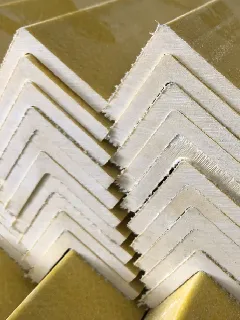loading...
- No. 9, Xingyuan South Street, Dongwaihuan Road, Zaoqiang County, Hengshui, Hebei, China
- admin@zjcomposites.com
- +86 15097380338
- Welcome to visit our website!
High-Quality FRP Grating Available for Purchase at Competitive Prices
The Rise of FRP Grating A Comprehensive Overview of Its Features and Benefits
In recent years, the demand for innovative materials in various industries has significantly surged. One such material that has garnered attention is Fiber Reinforced Polymer (FRP) grating. Known for its durability, lightweight nature, and corrosion resistance, FRP grating is increasingly becoming the preferred choice for various applications. This article explores the features, benefits, and market trends surrounding FRP grating, as well as considerations for those interested in purchasing it.
What is FRP Grating?
FRP grating is a type of flooring composed of a composite material made from fiberglass and resin. The manufacturing process involves combining glass fibers with a polymer resin to create a sturdy, lightweight material. This grating is available in various styles, including molded and pultruded options, each suitable for different applications.
Features of FRP Grating
1. Corrosion Resistance One of the primary advantages of FRP grating is its exceptional resistance to chemicals and environmental factors. It doesn't rust or corrode like traditional metal grating, making it ideal for chemical plants, wastewater treatment facilities, and coastal areas.
2. Lightweight Compared to steel or aluminum, FRP grating is considerably lighter, making it easier to handle and install. This characteristic also reduces the structural load, which can be beneficial in various applications, including elevated walkways and platforms.
3. Customizability FRP grating can be manufactured in various shapes, sizes, and colors. Depending on the application's requirements, it can be tailored to meet specific aesthetic or functional needs. Customization options allow for enhanced design flexibility in any project.
4. Anti-Slip Surface Safety is a paramount concern in industrial environments. FRP grating often comes with an anti-slip surface that provides secure footing, reducing the risk of slips and falls. This feature is particularly vital in wet or oily conditions.
frp grating for sale

Benefits of Using FRP Grating
1. Lower Maintenance Costs The durability and corrosion resistance of FRP grating lead to lower maintenance and replacement costs over time, providing a cost-effective solution for businesses.
2. Environmentally Friendly Some FRP materials are manufactured using sustainable practices and can be recycled. This environmentally friendly aspect is increasingly important for companies looking to reduce their ecological footprint.
3. Versatile Applications FRP grating can be utilized in a wide range of industries, including construction, aerospace, transportation, and marine. Its versatility makes it suitable for applications such as walkways, platforms, stair treads, and more.
4. Efficient Installation With its lightweight nature and various connection options, FRP grating can be quickly installed, leading to reduced labor costs and project timelines.
Market Trends and Considerations
The market for FRP grating is poised for growth as more industries recognize its benefits. As businesses seek to enhance operational efficiency while prioritizing safety and sustainability, FRP grating presents a compelling option. However, potential buyers should consider factors such as load-bearing requirements, environmental exposure, and specific application needs before making a purchase.
In conclusion, FRP grating is a revolutionary material that offers numerous advantages over traditional grating options. Its exceptional properties, including corrosion resistance, lightweight design, and safety features, make it a smart choice for various applications. As the demand for sustainable and cost-effective materials continues to rise, FRP grating is likely to establish itself as a standard in the industry, paving the way for innovative designs and improved safety standards across many sectors. Whether you’re a contractor, facility manager, or business owner, investing in FRP grating could very well enhance the durability and efficiency of your projects.
-
The Rise of FRP Profiles: Strong, Lightweight, and Built to LastNewsJul.14,2025
-
SMC Panel Tanks: A Modern Water Storage Solution for All EnvironmentsNewsJul.14,2025
-
GRP Grating: A Modern Solution for Safe and Durable Access SystemsNewsJul.14,2025
-
Galvanized Steel Water Tanks: Durable, Reliable, and Ready for UseNewsJul.14,2025
-
FRP Mini Mesh Grating: The Safer, Smarter Flooring SolutionNewsJul.14,2025
-
Exploring FRP Vessels: Durable Solutions for Modern Fluid HandlingNewsJul.14,2025
-
GRP Structures: The Future of Lightweight, High-Performance EngineeringNewsJun.20,2025
